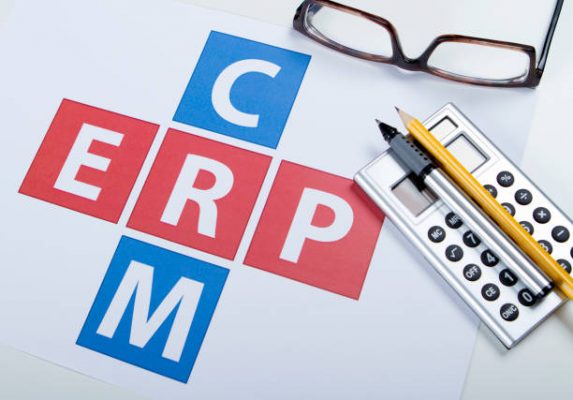
- May 1 2025
- SFI Solution Team
The Business Impact of ERP-CRM Integrations in Large Enterprises
In the current data-centric economy, large organizations encounter the increasing challenge of overseeing extensive information across various departments. Two pivotal systems—Enterprise Resource Planning (ERP) and Customer Relationship Management (CRM)—are crucial in optimizing operations and improving customer interactions. However, their full potential is realized only through integration. The integration of ERP and CRM provides a cohesive platform that enhances visibility, efficiency, and decision-making throughout the organization. This blog will examine the business implications of ERP-CRM integrations in large organizations, emphasize the primary advantages, and offer best practices to optimize return on investment.
What Is ERP-CRM Integration?
ERP (Enterprise Resource Planning) systems are designed to manage internal business processes such as accounting, procurement, supply chain, and inventory. CRM (Customer Relationship Management) systems focus on managing customer interactions, sales pipelines, marketing campaigns, and service requests.
ERP-CRM integration involves linking these two platforms to allow seamless data flow between back-end operations and front-end customer interactions. This means sales teams can access inventory data in real time, finance teams can generate accurate billing based on customer orders, and customer service can view historical purchases for better support.
The Strategic Business Benefits of ERP-CRM Integration
1. Enhanced Data Visibility and Accuracy
Integrating ERP and CRM ensures that all departments work from the same set of data. This eliminates data silos, reduces duplication, and minimizes errors. With real-time access to unified data, decision-makers can respond faster and more accurately to market demands.
2. Improved Customer Experience
Access to complete customer profiles—including order history, preferences, and support issues—enables teams to deliver more personalized and timely service. This leads to higher customer satisfaction and improved retention rates.
3. Streamlined Business Processes
ERP-CRM integration automates workflows across departments. For example, a closed sales deal in CRM can automatically generate an invoice in ERP, initiate order fulfillment, and update financial records. This automation reduces manual entry, speeds up operations, and boosts productivity.
4. Better Sales Forecasting and Financial Planning
Sales data from CRM combined with operational data from ERP provides a more comprehensive view of the business. This integrated insight supports more accurate forecasting, budgeting, and strategic planning.
5. Reduced Operational Costs
With a centralized data system and automated processes, enterprises can reduce administrative overhead, lower IT maintenance costs, and improve resource allocation. Over time, these efficiencies translate into significant cost savings.
Use Cases : ERP-CRM Integration in Action
Manufacturing Enterprises
Sales teams can view inventory levels and production schedules directly from CRM, allowing them to set realistic delivery timelines and avoid overpromising.
Retail Chains
Customer purchase history from CRM can feed into ERP’s demand planning module, improving stock replenishment and reducing out-of-stock scenarios.
Financial Services
Integration allows real-time synchronization of customer data, transaction records, and compliance reports, enhancing both customer service and regulatory adherence.
Key Challenges in ERP-CRM Integration
Despite the benefits, integration projects can face hurdles :
System Incompatibility : Legacy systems may not support modern APIs or data formats.
Data Quality Issues : Inconsistent or outdated data can undermine integration efforts.
Change Management : Employees must be trained and aligned with new workflows.
Cost and Time : Integration projects can be expensive and resource-intensive if not well-planned.
Best Practices for a Successful ERP-CRM Integration
1. Define Clear Business Objectives
Align integration goals with strategic business outcomes, such as improving customer satisfaction or reducing order processing time.
2. Choose the Right Integration Tools
Use middleware platforms or cloud-based integration solutions that offer scalability and real-time data syncing.
3. Ensure Data Standardization
Clean and structure data consistently across systems to ensure smooth integration and accurate reporting.
4. Engage Cross-Functional Teams
Include stakeholders from IT, sales, finance, operations, and customer service to ensure all requirements are considered.
5. Test Extensively Before Full Deployment
Conduct pilot tests to identify bugs and workflow issues before rolling out the solution enterprise-wide.
6. Monitor and Optimize Continuously
Post-integration, track performance metrics and user feedback to fine-tune processes and maximize ROI.
Future Trends in ERP-CRM Integration
As enterprises shift towards digital transformation, ERP-CRM integrations are evolving to incorporate:
AI and Machine Learning for predictive analytics and intelligent automation
Cloud-based Integrations that support scalability and global access
Mobile Access for on-the-go customer management and data entry
Advanced Data Security measures to protect sensitive information
Conclusion
For large enterprises, ERP-CRM integration is no longer optional—it’s a strategic necessity. By unifying front-end and back-end operations, businesses gain real-time visibility, improved agility, and enhanced customer engagement. Although the integration journey requires careful planning and execution, the long-term gains far outweigh the investment.
As competition intensifies and customer expectations evolve, businesses that embrace ERP-CRM integration will be better equipped to lead in their industries.
Looking to integrate your ERP and CRM systems?
Contact our enterprise solutions team today to discuss how we can help you streamline operations and drive growth.
Previous Post